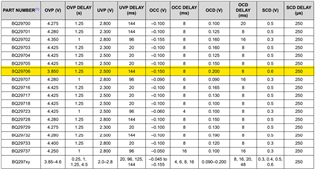Tool/software:
Hi Team,
Could you please advise: Does Ti have protection IC for LIC(Lithium-ion capacitor), which function is similar with BQ2970?
Requirement:
UVP(over discharge detection): 2.5V
OVP(over charge detection): 3.8V
Best regards,
Terry Hu




